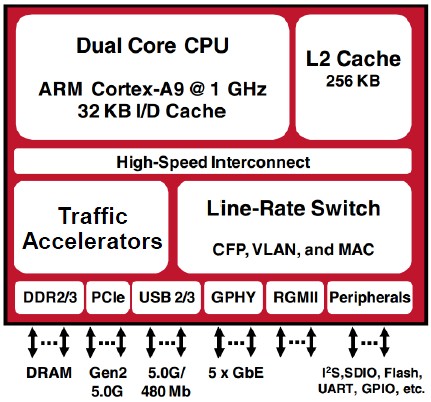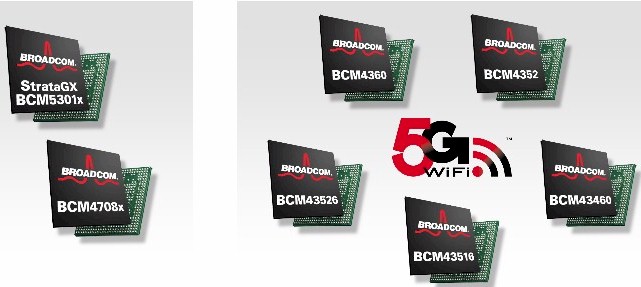 Broadcom has announced new SoC’s to get the most out of its draft 802.11ac wireless devices.
Broadcom has announced new SoC’s to get the most out of its draft 802.11ac wireless devices.
The StrataGX (BCM5301x) series for SMB routers and network attached storage (NAS) devices and the BCM4708x series for home routers and gateways are designed as companion devices to Broadcom’s "5G" draft 802.11ac chipsets.
The new devices combine a high performance processor, Gigabit Ethernet (GbE) switch, GbE physical layer transceivers (PHYs), USB 3.0 and traffic accelerators on a single chip. Both device families have the same basic block diagram (shown below). The main difference is that the StrataGX devices have higher clock rates and RGMII and other interfaces more suited to their target router and NAS applications.

Broadcom 5G SoC block diagram
Broadcom says this is the first time all of these elements have been combined into a single device. The integration allows a 12 Gbps interface between the switch, CPU and Traffic accelerators, something not possible if these elements were in separate devices.

Broadcom 5G SoC and WiFi Baseband devices
The new SoCs are sampling now and scheduled to ramp to production in the second half of this year.![]()
